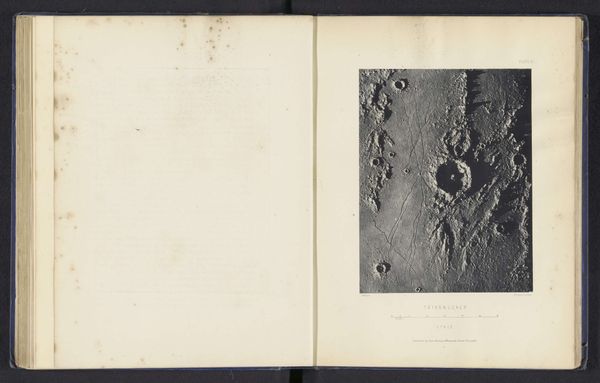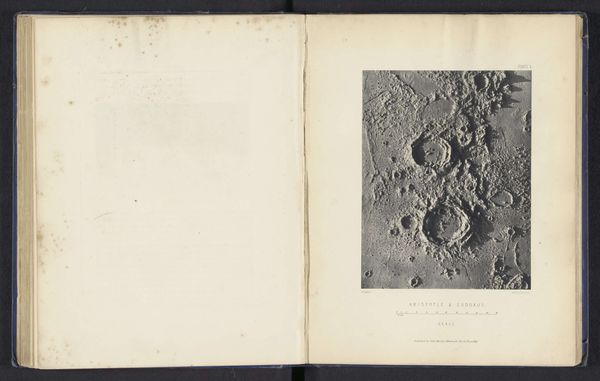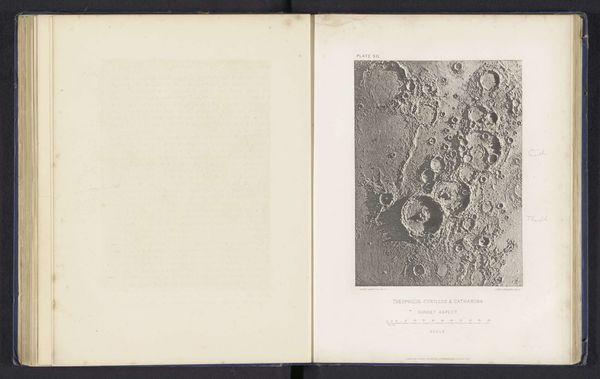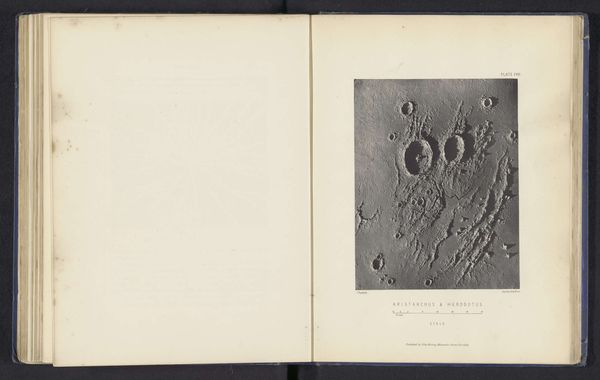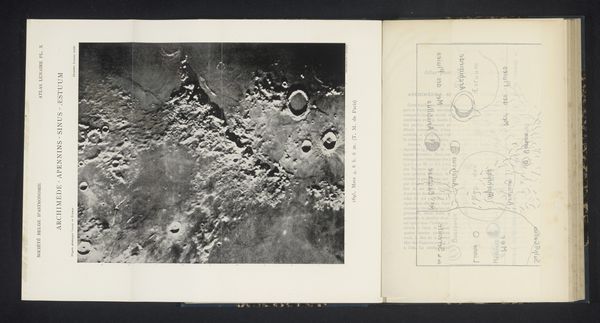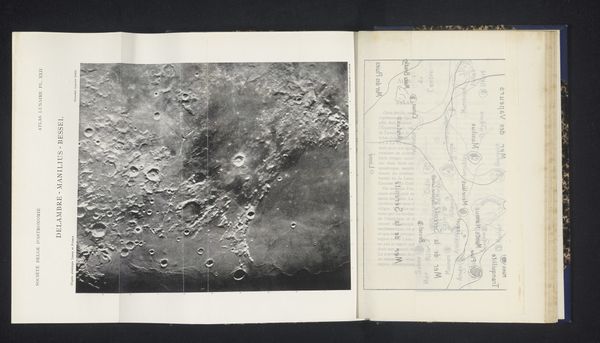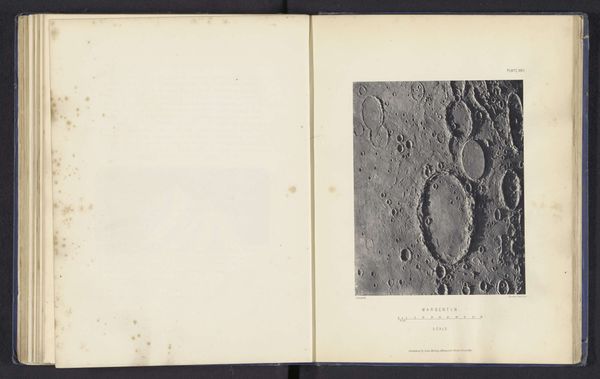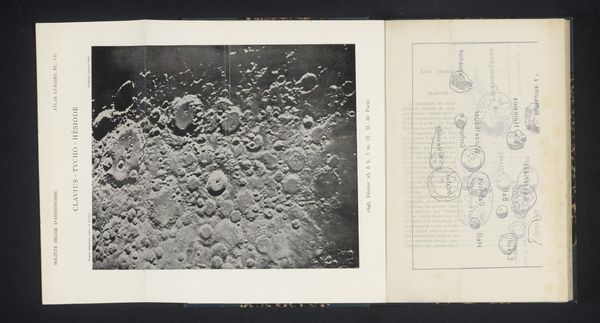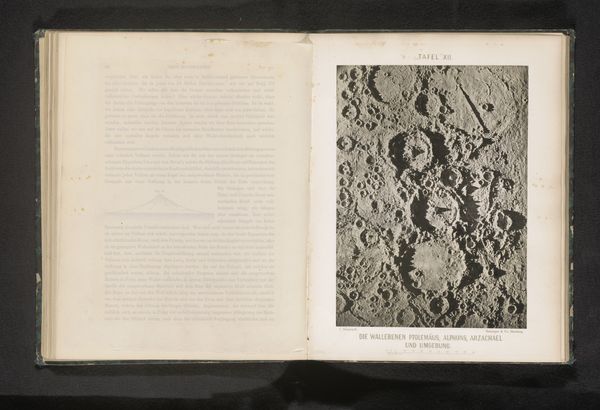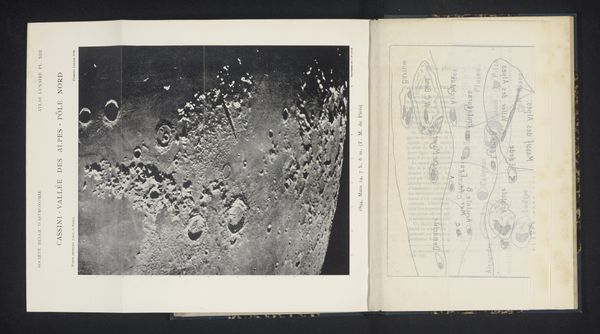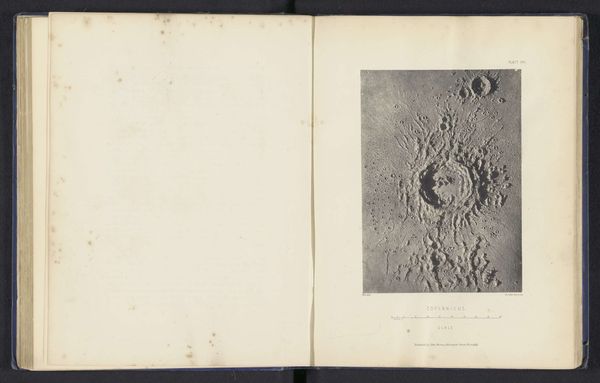
#
aged paper
#
homemade paper
#
script typography
#
sketch book
#
hand drawn type
#
personal sketchbook
#
hand-drawn typeface
#
fading type
#
mountain
#
sketchbook drawing
#
sketchbook art
Dimensions: height 200 mm, width 161 mm
Copyright: Rijks Museum: Open Domain
Editor: So, this is "The lunar Apennines, Archemedes, &c., &c." It’s from before 1873, by James Nasmyth, and it looks like it’s ink on paper. There's something wonderfully meticulous, even romantic, about capturing the moon in this pre-digital age. I’m struck by the sheer dedication. What captivates you most about this image? Curator: Oh, absolutely! It's a glimpse into how science and art were intertwined. It reminds me of stargazing as a kid, just marveling at something so distant and unknowable. Nasmyth wasn't just an artist, but an engineer, crafting his own telescopes and essentially building the moon bit by bit through observation and artistry. That texture, like some primordial soup bubbling on the page... it speaks to me. What do you make of the handwritten title, so casually scientific? Editor: It almost feels like a page torn straight from a scientist's personal sketchbook, lending an intimate feel to something cosmic in scale. The contrast is fascinating. Why do you think he chose to present it in this way? Curator: Perhaps it's a quiet invitation. Science can feel daunting, clinical. But by framing it in a sketchbook, complete with handwritten annotations, Nasmyth lowers the barrier. He says, “Look, I’m exploring, just like you can." It’s less about proclaiming knowledge and more about sharing a journey of discovery. Does that ring true to you? Editor: It does, absolutely! The imperfection of the presentation enhances the sense of wonder. It feels like you're invited to join him in puzzling over the cosmos. I initially viewed the medium as rather pragmatic given the time of creation, but after talking with you it is much more akin to almost dreamlike quality in presentation, despite the subject being a work of pure science! Curator: And that's the beauty, isn't it? It transcends a purely objective observation and is closer to some visual poetry about the unknown. It lets our own imaginations fill in the craters.
Comments
No comments
Be the first to comment and join the conversation on the ultimate creative platform.
